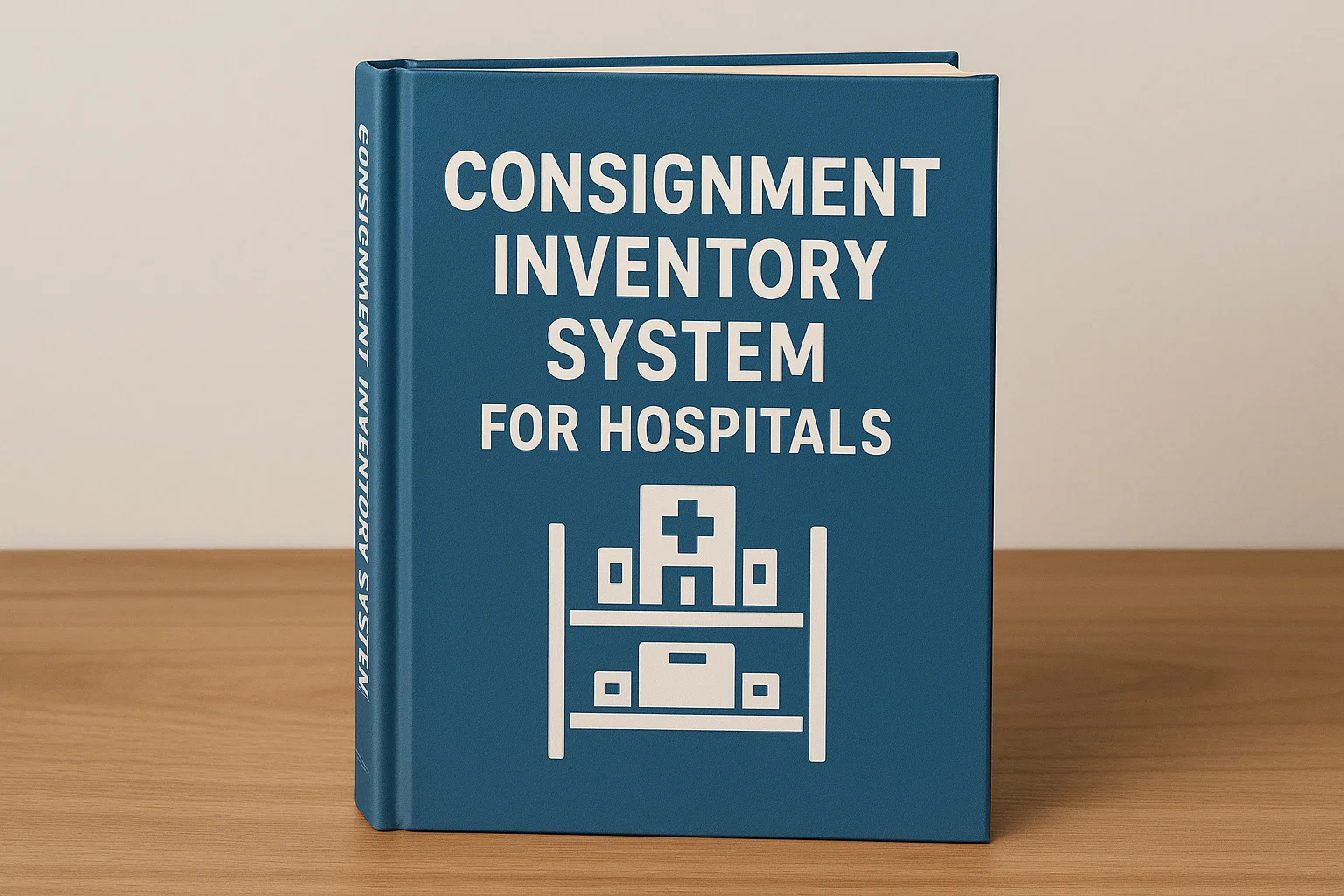Introduction
In today’s complex healthcare environment, hospitals face a constant challenge: how to balance cost efficiency with uncompromised patient care. One of the most critical yet often overlooked aspects of hospital management is inventory. Medical supplies, surgical instruments, implants, and life-saving drugs must be available when needed, but overstocking or shortages can be equally damaging. To tackle this issue, many hospitals are turning toward the consignment inventory system.
A comprehensive book on consignment inventory system for hospitals provides insights, strategies, and frameworks that administrators, supply chain managers, and healthcare professionals can adopt to streamline their operations. This book serves as both a guide and a reference manual, detailing how consignment systems work, their benefits, challenges, and real-world case studies of implementation in hospitals across different regions.
Read more : Standi: The Complete Guide to Meaning, Uses, and Importance
What is a Consignment Inventory System in Hospitals?
A consignment inventory system is a supply chain model where the supplier retains ownership of the stock until it is used or consumed by the hospital. Instead of purchasing and storing vast amounts of medical supplies upfront, the hospital only pays for items when they are actually used in patient care.
Core Principles:
- Ownership – The supplier retains ownership until consumption.
- Payment Model – Hospitals pay only when supplies are used.
- Stock Availability – Critical supplies are always available without excess stock.
- Tracking & Transparency – Usage data is monitored for billing and replenishment.
This system minimizes the financial burden of carrying large inventories while ensuring that life-saving items are always accessible.
Structure of the Book
The book on consignment inventory system for hospitals typically follows a structured format, allowing both beginners and advanced professionals to gain value.
1. Introduction to Healthcare Supply Chains
- Overview of hospital inventory management.
- Common challenges faced: high costs, wastage, stockouts.
2. Understanding Consignment Models
- Definition and history of consignment systems.
- How this model is applied in industries outside healthcare.
- Transition of this model into the hospital environment.
3. Designing a Consignment Program for Hospitals
- Identifying medical items suitable for consignment.
- Negotiating contracts with suppliers.
- Legal and regulatory considerations.
4. Technology & Tools
- Role of RFID, barcoding, and digital tracking systems.
- Integration with hospital ERP and supply chain management software.
5. Case Studies & Real-World Applications
- Success stories from hospitals that implemented consignment.
- Lessons from failures or poorly managed programs.
6. Benefits and ROI Analysis
- Cost savings for hospitals.
- Improved patient safety and reduced risks of stockouts.
- Better supplier relationships.
7. Challenges and Risk Mitigation
- Addressing supplier resistance.
- Managing expired or unused products.
- Data transparency and accountability.
8. Future of Consignment in Healthcare
- Role of artificial intelligence and predictive analytics.
- Expansion to pharmaceuticals and personalized medicine.
Why Hospitals Need This Book
1. Practical Guidance
Hospitals often know about consignment systems but struggle with execution. This book serves as a practical manual for setting up and managing these programs.
2. Cost Optimization
Healthcare costs are rising globally. A consignment system helps reduce upfront expenses and minimize waste.
3. Patient Care Prioritization
By ensuring critical supplies are available at all times, hospitals avoid treatment delays, thereby improving patient care outcomes.
4. Regulatory Compliance
The book explains how consignment systems can be aligned with healthcare regulations to ensure both financial and operational transparency.
Benefits of Consignment Inventory Systems for Hospitals
- Reduced Capital Investment – Hospitals do not need to purchase items in bulk.
- Minimized Wastage – Lower chances of expired or unused stock.
- Continuous Supply Availability – Essential items are always in stock.
- Enhanced Supplier Partnerships – Builds long-term collaboration and trust.
- Improved Accountability – Clear records of usage and billing reduce disputes.
Challenges in Implementing Consignment Inventory
Despite its benefits, hospitals face obstacles when implementing this system.
- Supplier Reluctance – Some suppliers may be hesitant to retain ownership.
- Tracking Issues – Without proper systems, tracking usage can be difficult.
- Regulatory Barriers – Different regions may have complex rules.
- Technology Integration – Hospitals must adopt digital systems to manage consignment effectively.
The Role of Technology in Consignment Systems
Technology is at the heart of successful consignment programs. The book emphasizes digital transformation and tools that make tracking seamless.
- RFID Tags: Enable real-time tracking of supplies.
- Barcoding Systems: Simplify billing and replenishment.
- ERP Integration: Links hospital departments with suppliers for smooth operations.
- Predictive Analytics: Helps forecast demand for critical items.
Future Outlook Highlighted in the Book
The future of consignment inventory in hospitals is promising. With the rise of personalized medicine, robotic surgeries, and advanced pharmaceuticals, hospitals require advanced supply chain solutions. This book explains how:
- AI will predict supply usage more accurately.
- Blockchain can enhance transparency in supplier-hospital agreements.
- Cloud-based platforms will make real-time monitoring possible worldwide.
FAQs
Q1: What is a consignment inventory system in hospitals?
A consignment inventory system is a model where suppliers retain ownership of stock until it is used, and hospitals only pay for items once consumed.
Q2: Why is a book on consignment inventory system for hospitals important?
It provides healthcare managers with practical steps, frameworks, and case studies to implement the system effectively.
Q3: What are the main benefits of consignment systems?
Cost savings, minimized waste, constant supply availability, and stronger supplier relationships.
Q4: What challenges do hospitals face with consignment systems?
Supplier reluctance, regulatory barriers, technology integration issues, and tracking difficulties.
Q5: How does technology improve consignment systems?
By using RFID, barcoding, ERP software, and predictive analytics, hospitals can monitor and manage inventory seamlessly.
Q6: Can consignment inventory systems work for pharmaceuticals?
Yes, the model can be extended to medicines, especially high-value drugs, to reduce costs and prevent shortages.
Q7: Who should read this book?
Hospital administrators, supply chain managers, medical staff involved in procurement, and healthcare policy makers.
Q8: How do consignment systems improve patient care?
They ensure critical supplies are available at all times, reducing treatment delays and improving healthcare outcomes.
Q9: Is this system cost-effective for all hospitals?
While more beneficial for large hospitals, smaller healthcare centers can also benefit with the right supplier agreements.
Q10: What is the future of consignment inventory in healthcare?
It is expected to grow with AI, blockchain, and digital systems making supply chains more efficient and transparent.
Conclusion
A book on consignment inventory system for hospitals is not just a theoretical discussion—it is a blueprint for the future of hospital supply chain management. By explaining the principles, benefits, challenges, and practical applications, such a book equips healthcare leaders with the knowledge they need to transform hospital inventory practices.
In a time where cost control, patient care, and efficiency are more important than ever, consignment inventory stands out as a solution that addresses all three. Hospitals that adopt this system gain not only financial stability but also the trust and safety of the patients they serve.










